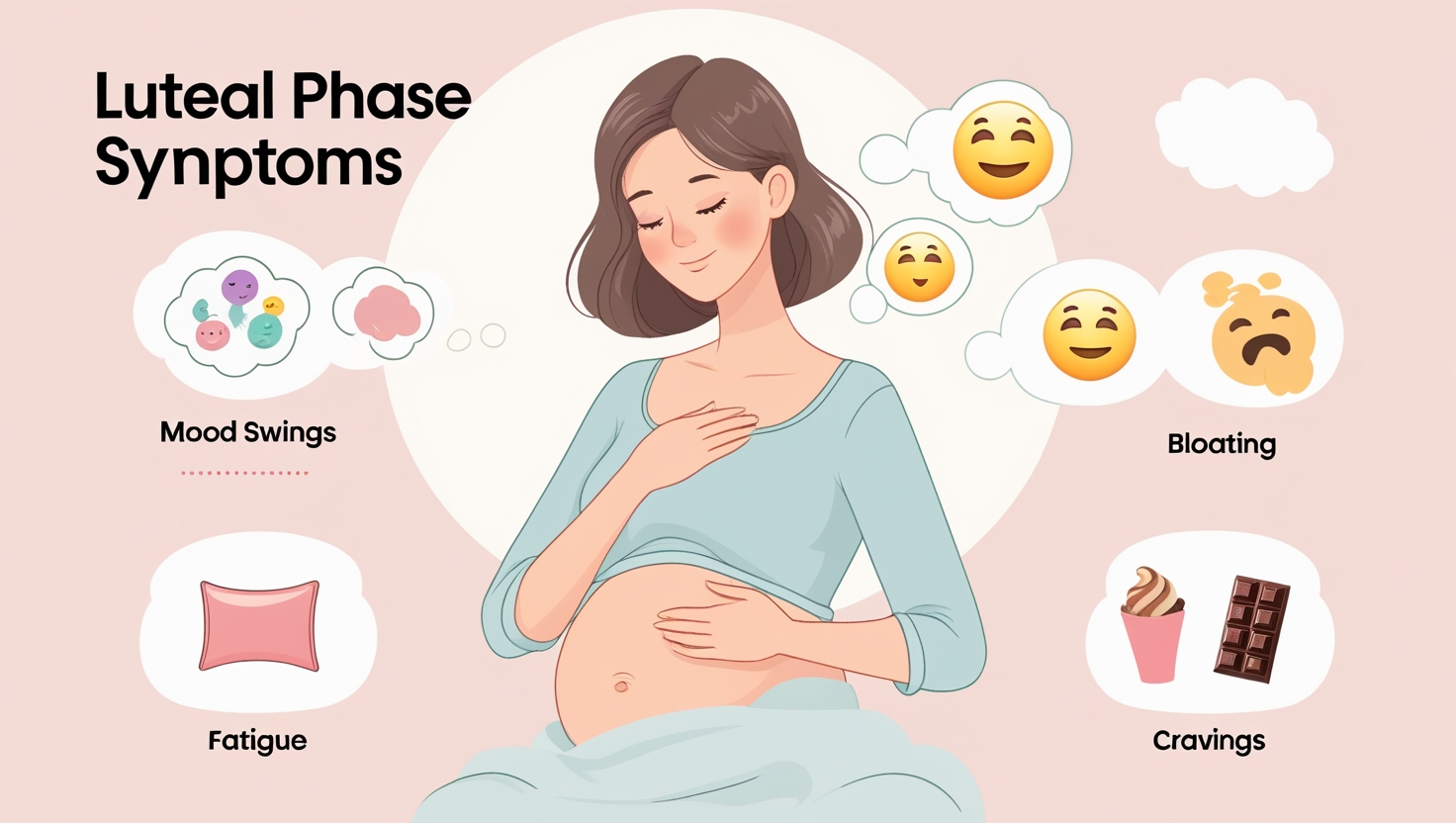
Ever feel like your body’s playing a trick on you every month? Meet Anjali, a 29-year-old from Mumbai, who used to dread the weeks before her period. She’d feel moody, bloated, and exhausted, unsure why her energy tanked. One day, chatting with a friend, she learned about the luteal phase—the part of her menstrual cycle causing those symptoms. Anjali decided to take control, trying simple habits that transformed her days. Now, she feels empowered, not overwhelmed.
If Anjali’s story resonates, you’re not alone. The luteal phase can bring challenges, but understanding and managing its symptoms can change how you feel. Here’s a friendly guide to luteal phase symptoms and 5 practical ways to feel your best in 2025. Let’s dive in and take charge of your cycle!

What Is the Luteal Phase?
The luteal phase is the second half of your menstrual cycle, starting after ovulation (around day 14) and lasting until your period (about 10-14 days). Your body prepares for a possible pregnancy, and hormone changes (like rising progesterone) can cause physical and emotional shifts. Up to 90% of women experience luteal phase symptoms, per studies, but you can manage them with ease.
Common Luteal Phase Symptoms
You might notice:
- Mood swings: Irritability or sadness (like Anjali’s sudden grumpiness).
- Bloating: Feeling puffy or heavy.
- Fatigue: Low energy or trouble focusing.
- Cravings: Wanting sweets or salty snacks.
- Physical discomfort: Tender breasts or mild cramps.
These are normal, but they don’t have to ruin your week. Here’s how to feel balanced and in control.

1. Nourish Your Body
Eating nutrient-rich foods can stabilize your mood and energy.
- Try this: Add fruits, veggies, and whole grains (e.g., oats, bananas). Avoid excess sugar to curb cravings.
- Anjali’s trick: She swapped chips for almonds, feeling less bloated.
- Why it works: Balanced meals regulate blood sugar, reducing mood swings.
2. Move Gently
Light exercise, like walking or yoga, boosts endorphins and eases discomfort.
- Action: Try a 15-minute walk or a gentle yoga video on YouTube.
- Stat: Exercise cuts fatigue by 30%, per research.
- Example: Anjali did 10 minutes of stretching daily, lifting her energy.
3. Prioritize Rest
Hormone shifts can make you tired, so listen to your body.
- Tip: Aim for 7-8 hours of sleep and take short naps if needed.
- How: Create a bedtime routine—dim lights, avoid screens 30 minutes before bed.
- Anjali’s win: She slept 30 minutes earlier, waking up refreshed.
4. Practice Mindfulness
Stress can worsen symptoms, but mindfulness helps you stay calm.
- Try this: Spend 5 minutes daily on deep breathing or journaling (e.g., write 3 things you’re grateful for).
- Why it works: Mindfulness reduces irritability by 25%, studies show.
- Example: Anjali journaled her feelings, which helped her feel grounded.
5. Stay Hydrated
Drinking water reduces bloating and boosts energy.
- Action: Aim for 8 glasses daily; add lemon or cucumber for flavor.
- Tip: Keep a water bottle nearby to sip throughout the day.
- Anjali’s habit: She carried a bottle, noticing less puffiness in days.

When to Seek Help
Most luteal phase symptoms are manageable, but if they feel overwhelming (e.g., severe mood changes or pain), consider talking to a trusted healthcare professional. You deserve to feel your best!
Start Today!
You don’t need to overhaul your life—just start with one tip, like Anjali did. Try sipping water or taking a short walk today. Download our free self-care checklist to track your habits and feel amazing during your luteal phase!
- Navigating Parent-Child Relationship Problems: Real Talk from a Mom Who’s Been There
- Unlock Your Mind: The Ultimate Guide to a Successful Dopamine Detox
- 10 Essential Tips for Parents: Unlocking YourPath to Personal Improvement and FamilyHarmony
- How Mochi Health Can Kickstart Your Wellness Journey in 2025
- Understanding Luteal Phase Symptoms: 5 Ways to Feel Your Best






